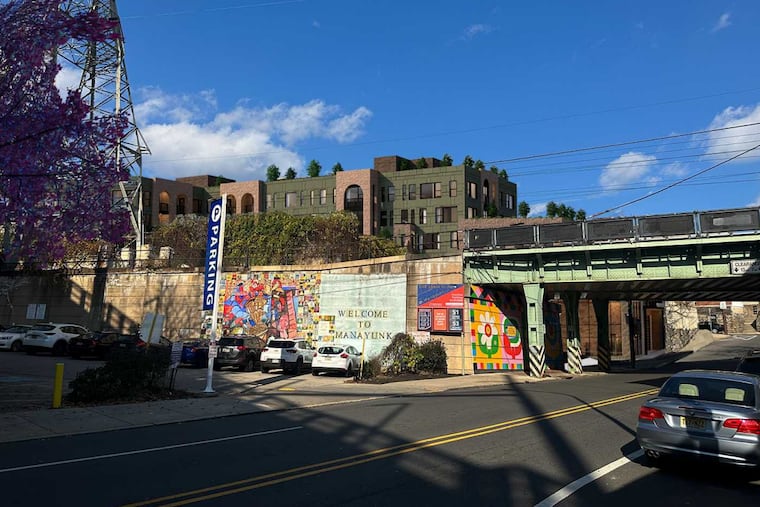Manayunk neighborhood groups criticize lack of parking at proposed apartment building
A new apartment proposal in Manayunk has a unique design, but neighbors say there's not enough parking.

A proposed 60-unit apartment building from YESS Properties is stirring controversy in Manayunk, as neighborhood groups fear a parking shortage in their riverside neighborhood.
The property at 120-26 Green Lane would back up onto the Manayunk Bridge Trail, with the lobby on Green Lane and the garage entrance on Baker Street. The plan calls for 26 parking spaces beneath the structure.
“We know from history that you need close to one-to-one parking,” said Kevin Smith, president of the Manayunk Neighborhood Council. “One of the attractions of Manayunk is its access to the expressway. It doesn’t have good access to services, like grocery stores. Everybody has a car.”
The developers did not provide a response to The Inquirer’s emailed questions. The project does not need any zoning permissions, although it is subject to the advisory-only Civic Design Review board.
YESS Properties zoning lawyer Jared Klein of Blank Rome noted that the proposal was scheduled to go to Civic Design Review on June 6, but they are pushing back their date to further engage with the community residents over their concerns.
The neighborhood group is also critical of what is describes as YESS Properties attempting to squeeze in a few more units by excavating the site and building deep in the hillside to, it argues, get around a height limit. It also worries about trash and delivery vehicles backing into the site and backing up traffic on the narrow roads around it.
But Smith says that those arguments are technical in nature. The parking issue goes beyond this one project.
Manayunk has long attracted new residents and small businesses, experiencing a wave of reinvestment and repopulation even earlier than the neighborhoods surrounding Center City. But it is not surrounded by walkable neighborhoods like South Philadelphia is or rich in transit lines like University City or Fishtown.
Smith argues that as a result, automobiles are a necessity. The need, combined with the community’s relatively high incomes, means the neighborhood has higher levels of car ownership than most of Philadelphia.
With the recent development boom, many of the parking lots in the neighborhood’s outlying areas such as flood-prone Venice Island have been turned into housing.
“We’ve lost literally hundreds of off-street parking spaces in the last five years, and they’re building things that don’t have enough parking,” Smith said. “People are panicking in the neighborhood. A lot of the overflow has been taken up by the lot on Venice Island and those spaces are being lost.”